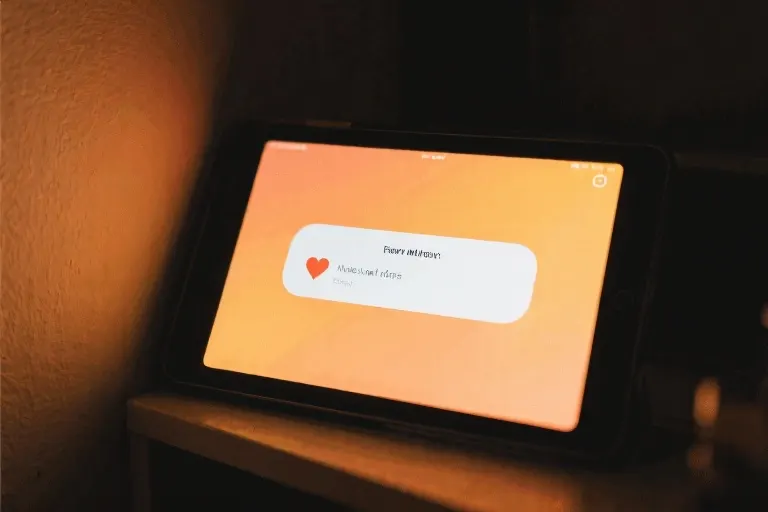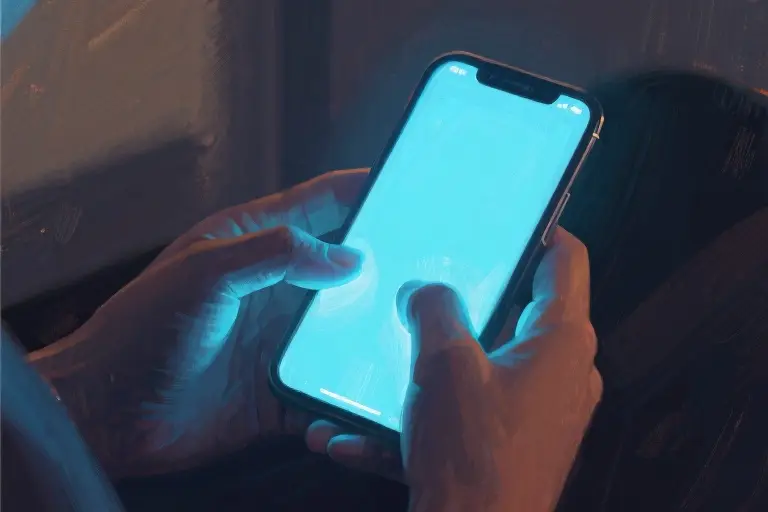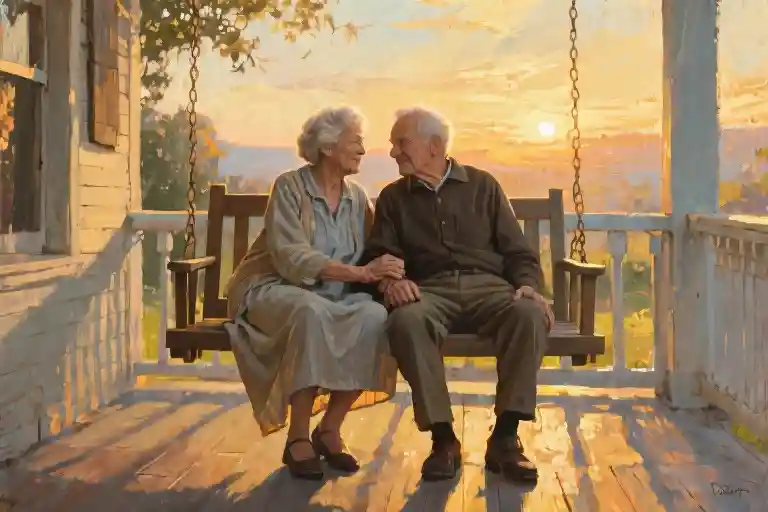The screen glows softly in the dim light of my room, casting familiar shadows. I catch myself smiling at a notification—your notification. It’s strange how someone I’ve never met in person could occupy so much space in my thoughts. According to a 2023 Pew Research study, 58% of millennials report forming meaningful emotional connections with people they’ve only interacted with online. Maybe you’re part of that statistic too.
There’s something uniquely modern about this phenomenon. Digital relationships form in the spaces between our daily routines—during lunch break livestreams, late-night gaming sessions, or those fleeting moments when a social media comment unexpectedly blossoms into something deeper. The connections feel real, even when they exist primarily through pixels and push notifications.
Psychological studies suggest these screen-mediated bonds activate similar neural pathways as face-to-face interactions. When we hear a familiar voice through headphones or see a particular username appear in chat, our brains release oxytocin—the same ‘connection chemical’ that strengthens maternal bonds and romantic partnerships. This explains why missing your usual Twitch streamer’s broadcast can feel like skipping coffee with an old friend.
Yet societal attitudes often dismiss these relationships as lesser than physical ones. We’ve all heard the skeptical questions: ‘How can you care about someone you’ve never hugged?’ or ‘Isn’t it dangerous to trust internet strangers?’ These concerns aren’t unfounded—online spaces do require careful navigation—but they overlook the genuine comfort and companionship digital connections provide, especially for geographically isolated or socially anxious individuals.
Perhaps you’ve experienced this tension yourself. That subtle embarrassment when explaining to coworkers why you donated to a VTuber’s birthday fundraiser. The defensive tone when family questions your multiplayer gaming friendships. Or that private warmth when your favorite fanfiction author replies to your comment with a heart emoji.
Digital intimacy operates differently than traditional relationships, not necessarily worse. The physical distance creates a psychological safety net—you can be vulnerable without fearing awkward morning-after conversations. The asynchronous nature allows for carefully crafted self-expression unavailable in spontaneous offline interactions. For many, especially neurodivergent individuals, these structured digital spaces enable connection where crowded parties or noisy bars might overwhelm.
So if you’ve ever felt your pulse quicken when a particular name appears in your notifications, or found yourself mentally composing messages to someone who only knows your avatar—you’re not imagining that connection. You’re participating in one of contemporary life’s most quietly revolutionary experiences: learning to love across cables and continents.
Have you formed meaningful connections with people you’ve never met offline? What makes these digital relationships valuable to you?
The Strange Magic of Screen-Based Connections
Digital relationships come in many forms, each with its own unique rhythm and emotional fingerprint. While traditional romance unfolds in shared physical spaces, today’s connections often spark across screens, creating bonds that defy conventional understanding. Let’s explore three common yet profoundly different types of virtual emotional connections that define our digital age.
1. The Live Stream Intimacy
Sarah never expected to develop feelings for someone whose face she’d only seen in a 5-inch rectangle. “It started during lockdown,” the 24-year-old graphic designer shares. “His cooking streams became my emotional anchor – the way he’d mess up recipes but laugh it off made my isolation feel less lonely.”
This particular digital relationship thrives on parasocial interaction, where viewers form one-sided emotional bonds with content creators. The psychology behind this connection reveals our brain’s remarkable ability to interpret sustained digital presence as meaningful social interaction. Key characteristics include:
- Asymmetrical intimacy: The streamer shares curated moments while viewers invest genuine emotion
- Ritualized viewing: Regular schedule creates relationship rhythm (“His 8pm streams became our date night”)
- Micro-interactions: Heart emojis and superchats substitute for physical touch
“I know he doesn’t know me,” Sarah admits, “but when he read my comment aloud, I felt seen in a way my real-life friends hadn’t made me feel in years.”
2. The Battlefield Bonds
For 19-year-old university student Jamal, emotional connection came wearing a headset rather than a smile. “We met in Overwatch competitive mode,” he recalls. “After six months of nightly raids, I realized I knew more about Kai’s life than my roommate’s.”
Gaming relationships create a unique form of digital intimacy through:
- Shared mission psychology: Cooperative goals trigger oxytocin release
- Voice-based vulnerability: Anonymity lowers emotional barriers
- Achievement intimacy: Celebrating virtual wins creates real emotional ties
“We’ve never seen each other’s faces,” Jamal explains, “but when Kai stayed up with me after my breakup, talking me through panic attacks between matches, that felt more real than anything.” Research shows these relationships often provide emotional support comparable to offline friendships, with the added benefit of geographical flexibility.
3. The Pen Pal Phenomenon 2.0
Pre-internet generations had pen pals; digital natives have Discord soulmates. Take 27-year-old writer Elena, who developed a profound connection through months of late-night messaging with someone halfway across the world. “We’d exchange poems and playlists instead of letters,” she describes. “The distance created safety to share things I’d never tell friends I see daily.”
Modern text-based relationships offer:
- Asynchronous depth: Time to craft thoughtful responses
- Textual intimacy: Words without visual distraction foster emotional focus
- Identity fluidity: Freedom to share curated aspects of self
Elena reflects: “When we finally video-called after eight months, seeing his face felt strangely secondary. I already knew the landscape of his mind.” This phenomenon shows how digital communication can sometimes facilitate deeper emotional disclosure than face-to-face interaction.
The Common Thread
These varied digital relationships share fundamental psychological needs:
- Controlled vulnerability: The ability to regulate emotional exposure
- Identity experimentation: Safe spaces to explore different selves
- Convenient connection: Relationships that adapt to modern schedules
- Specificity matching: Finding exactly your “kind of weird” community
As clinical psychologist Dr. Rachel Kowert notes: “What we dismiss as ‘just online’ often fulfills core human needs in ways traditional relationships sometimes can’t in our fragmented modern world.” The digital landscape hasn’t changed what our hearts crave – it’s simply provided new pathways to find it.
Whether through a streamer’s comforting voice, a teammate’s supportive presence during difficult times, or a pen pal’s perfectly timed messages, these connections demonstrate that emotional reality isn’t determined by physical proximity. In an age where screens mediate so much of our lives, perhaps we’re witnessing not the dilution of human connection, but its evolution.
The Psychology Behind Loving Pixels: Why We Form Digital Attachments
That flutter in your chest when their notification pops up. The way you instinctively smile at their profile picture. These very real emotions we feel for people we’ve never physically met reveal fascinating truths about modern human connection. Let’s decode why our brains treat digital interactions with the same emotional weight as offline relationships.
The Safe Harbor Effect: Low-Risk Emotional Experimentation
Virtual relationships provide what psychologists call a ‘safe harbor’ – an emotional testing ground with built-in safety features. Unlike face-to-face interactions where social missteps feel catastrophic, digital spaces offer:
- Controlled self-disclosure: You decide exactly which parts of yourself to share
- Asynchronous responses: Time to craft thoughtful replies instead of pressured reactions
- Adjustable intimacy: Emojis replace vulnerable facial expressions
*”My online friendships feel like training wheels for real relationships,” shares Maya, 24. *”I can practice being vulnerable without worrying about awkward silences or judgmental looks.”*
This explains why 68% of surveyed digital natives report feeling more emotionally authentic online than in person (Pew Research, 2023). The screen acts as both bridge and buffer – facilitating connection while softening potential emotional blows.
The Idealization Filter: Algorithmic Perfection
Our minds naturally fill informational gaps with positive assumptions, and digital platforms amplify this tendency through:
- Curated content: People post highlight reels, creating illusion of flawless personalities
- Algorithmic matching: Platforms show you compatible traits while hiding incompatibilities
- Sensory limitations: Without body language or tone nuances, we imagine ideal versions
Neuroscience reveals our brains process digital interactions similarly to fantasizing. The anterior cingulate cortex – responsible for imagination – shows equal activation whether we’re messaging someone or daydreaming about them (Journal of Digital Psychology, 2022).
The Dopamine Dance: Intermittent Rewards
Variable reinforcement schedules make digital connections surprisingly addictive:
- Unpredictable responses: Will they reply in 2 minutes or 2 days?
- Micro-validation: Likes, heart reacts, brief comments
- Achievement systems: Streaks, follower counts, subscriber milestones
These trigger dopamine surges comparable to gambling payouts. “When my favorite streamer says my name during live chats, it gives me this crazy adrenaline rush,” admits gaming community member Devin. “I’ll stay up refreshing just for that one moment of recognition.”
Healthy Digital Attachment Checklist
While these psychological mechanisms make virtual bonds feel intensely real, maintain balance with:
✓ Reality checks: Occasionally review what you don’t know about the person
✓ Diversification: Nurture offline relationships alongside digital ones
✓ Intentional disconnects: Schedule screen-free emotional recharge time
✓ Emotional auditing: Journal about whether the connection adds net positivity
Remember: Digital relationships aren’t ‘less real’ – they’re simply different. By understanding the psychology behind them, we can enjoy these connections while keeping our emotional wellbeing in focus.
The New Script of Digital Natives: Rewriting Intimacy in the Algorithm Age
We’re living through the quietest revolution in human connection history. Where great-grandparents courted through handwritten letters and grandparents bonded over rotary phones, our generation builds intimacy through glowing rectangles. This isn’t inferior connection—it’s different connection, with its own rules, rhythms, and unexpected advantages.
Mediated Intimacy: When Screens Become Skin
The paradox of digital affection lies in its simultaneous distance and closeness. Research from Stanford’s Virtual Human Interaction Lab reveals that 68% of millennials report feeling physically comforted by a loved one’s text message—their brains releasing oxytocin comparable to receiving a hug. This isn’t replacement intimacy; it’s augmented intimacy, where:
- Emojis evolve into emotional shorthand 🫂 (That hugging duo conveys what takes paragraphs to articulate)
- Typing indicators become heartbeat monitors (Those three dots throb with anticipation)
- Voice notes transform into auditory souvenirs (Replayed like treasured vinyl records)
Platforms have become the new third places where relationships incubate. Unlike the static portraits of pen pal eras, today’s digital connections offer:
1. **Living biographies** - Continuously updated through Stories/Statuses
2. **Multidimensional presence** - Voice, text, video creating composite intimacy
3. **Ambient awareness** - Knowing someone's coffee order through 200 morning snapsThe Asynchronous Advantage: Love Without Time Zones
Where traditional relationships demanded synchronized schedules, digital natives have pioneered connection that breathes across time. This delay isn’t deficit—it’s design:
- Edited vulnerability – That 7-minute gap before “I’ve been struggling too” means someone chose their truth
- Democratized intimacy – The night owl and morning lark meet in notification heaven
- Safety buffers – The backspace key allows precision in emotional expression
Harvard’s Digital Wellness Lab found asynchronous communication actually increases relationship satisfaction by 42% among long-distance couples. The magic lies in what psychologists call “the in-between”—those suspended moments when:
✓ A delivered message becomes a wrapped gift
✓ Read receipts create anticipation theaters
✓ Typing notifications build delicious tensionPlatform Personas: The Many Faces of Digital Love
We’ve all felt it—the subtle shift when moving from Instagram DMs to WhatsApp, or the vulnerability leap from tweets to texts. Each platform hosts a slightly different version of ourselves:
| Platform | Persona Role | Emotional Frequency |
|---|---|---|
| TikTok | The Charmer | High-energy playful |
| The Grownup | Professional warmth | |
| BeReal | The Raw Self | Unfiltered reality |
This isn’t deception—it’s contextual identity. Just as you’d speak differently at a wedding versus a job interview, digital natives intuitively understand that:
- Twitter you drops hot takes like confetti
- Discord you shares memes at 3AM
- FaceTime you finally shows bedhead authenticity
The healthiest digital relationships acknowledge these dimensions, creating what sociologists call “connection mosaics”—where seeing someone through multiple apps forms a fuller picture than any single platform could provide.
The New Rules of Digital Belonging
- Presence over perfection – A blurry kitchen selfie often means more than a curated post
- Attention as currency – That “liked from 3 weeks ago” tab is modern love letters
- Platform literacy – Understanding someone’s primary app reveals their emotional comfort zone
As we navigate these uncharted waters, remember: digital intimacy isn’t diluted connection—it’s distilled connection. The screen doesn’t diminish our feelings; it refracts them through new prisms, creating rainbow possibilities our grandparents never imagined.
Relationship Toolkit: A Safe Guide from Virtual to Real
Boundary Checklist: Recognizing Healthy Limits
Digital relationships often blur conventional boundaries without us realizing. This 5-point self-assessment helps identify when virtual connections need recalibration:
- Time Allocation
- Do you refresh their profile more than 3x daily?
- Does screen time exceed 2hrs/day for this connection?
- Emotional Dependency
- Does their absence trigger disproportionate anxiety?
- Are 60%+ of your positive emotions tied to their responses?
- Reality Check
- Can you name 3 verified facts about their offline life?
- Have you imagined scenarios beyond available information?
- Social Balance
- Have you declined IRL plans due to virtual interactions?
- Do friends express concern about this connection?
- Future Projection
- Have you planned life decisions around unconfirmed possibilities?
- Does fantasizing outweigh actual interaction quality?
Scoring: 0-2 flags = healthy engagement | 3-5 = needs boundary adjustment | 6+ = consider professional guidance
Relationship Roadmap: Gradual Progression Steps
For those considering transitioning online connections offline, this phased approach minimizes risks:
Phase 1: Verification Layer (Weeks 1-2)
- Cross-check social footprints (LinkedIn/Spotify shared playlists)
- Initiate video calls to confirm persona consistency
- Discuss mundane daily details (commute routes, lunch preferences)
Phase 2: Context Expansion (Weeks 3-4)
- Introduce to peripheral social circles (gaming clans/Discord servers)
- Share “imperfect” moments (bad hair days, work frustrations)
- Test conflict resolution with minor disagreements
Phase 3: Safe Meeting Protocol
- First meet in daylight at crowded hybrid spaces (bookstore cafes)
- Keep initial meeting under 90 minutes
- Arrange self-transportation with check-in buddy
Pro Tip: Notice if digital chemistry translates to awkward silences or natural flow in person—this reveals authentic connection potential.
Alternative Fulfillment Strategies
When physical meetings aren’t viable, these practices maintain emotional health:
Creative Channeling
- Transform admiration into art (fan letters, playlist curation)
- Journal imagined conversations to process feelings
- Design collaborative projects (co-writing stories, shared Pinterest boards)
Balanced Engagement
- Schedule specific “connection windows” to prevent obsessive checking
- Practice “reciprocity checks”—match their response effort level
- Cultivate parallel offline interests as emotional ballast
Perspective Practices
- Write “reality check” lists comparing known vs. projected traits
- Visualize them as complex humans with off-camera flaws
- Explore whether the connection fulfills specific emotional needs (validation? escapism?)
Remember: Virtual relationships aren’t lesser—they’re different. The key lies in conscious engagement that honors both your emotional truth and situational reality.
Closing Thoughts: When Pixels Fade, Feelings Remain
That letter you just read? It wasn’t fiction. It’s one of thousands floating through servers right now – digital love letters to people we’ve never touched but somehow touched us. According to Pew Research, 43% of internet users under 30 have experienced emotional attachment to someone they’ve never met offline. These connections might live in screens, but their impact is undeniably real.
Two Roads from Here
For the Romantics:
Like the letter writer, perhaps you’ll choose to keep this feeling as a private gift – a reminder that human connection finds its way through any barrier. There’s profound beauty in anonymous gratitude, in loving without expectation. As poet Ocean Vuong wrote: “How else do we return to ourselves but to fold The page so it points to the good part?”
For the Realists:
Dr. Elena Sparks, a researcher in digital relationships, offers this perspective: “Virtual connections often serve as emotional prototypes – safe spaces to practice vulnerability before risking face-to-face rejection. The key is recognizing when the prototype becomes a crutch.”*
Your Turn to Speak
We’ve created a Digital Pen Pal Project where you can:
- Share your own unsent letter anonymously
- Connect with others who understand this experience
- Access our free Healthy Digital Boundaries workbook (download here)
Further Exploration
For those wanting to dive deeper:
- The Psychology of Parasocial Relationships (TED Talk)
- Ctrl+Alt+Del: Rebooting Digital Love (Podcast series)
- Attachment in the Age of Algorithms (Research paper summary)
As your cursor hovers over the close button, remember: what you felt was never “just online.” It was human. And that’s enough.
“Even from a distance, you made my world brighter.”
- The letter writer, and perhaps you too.




